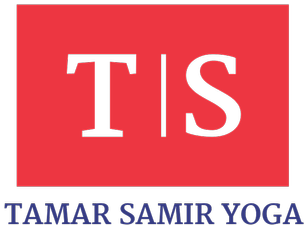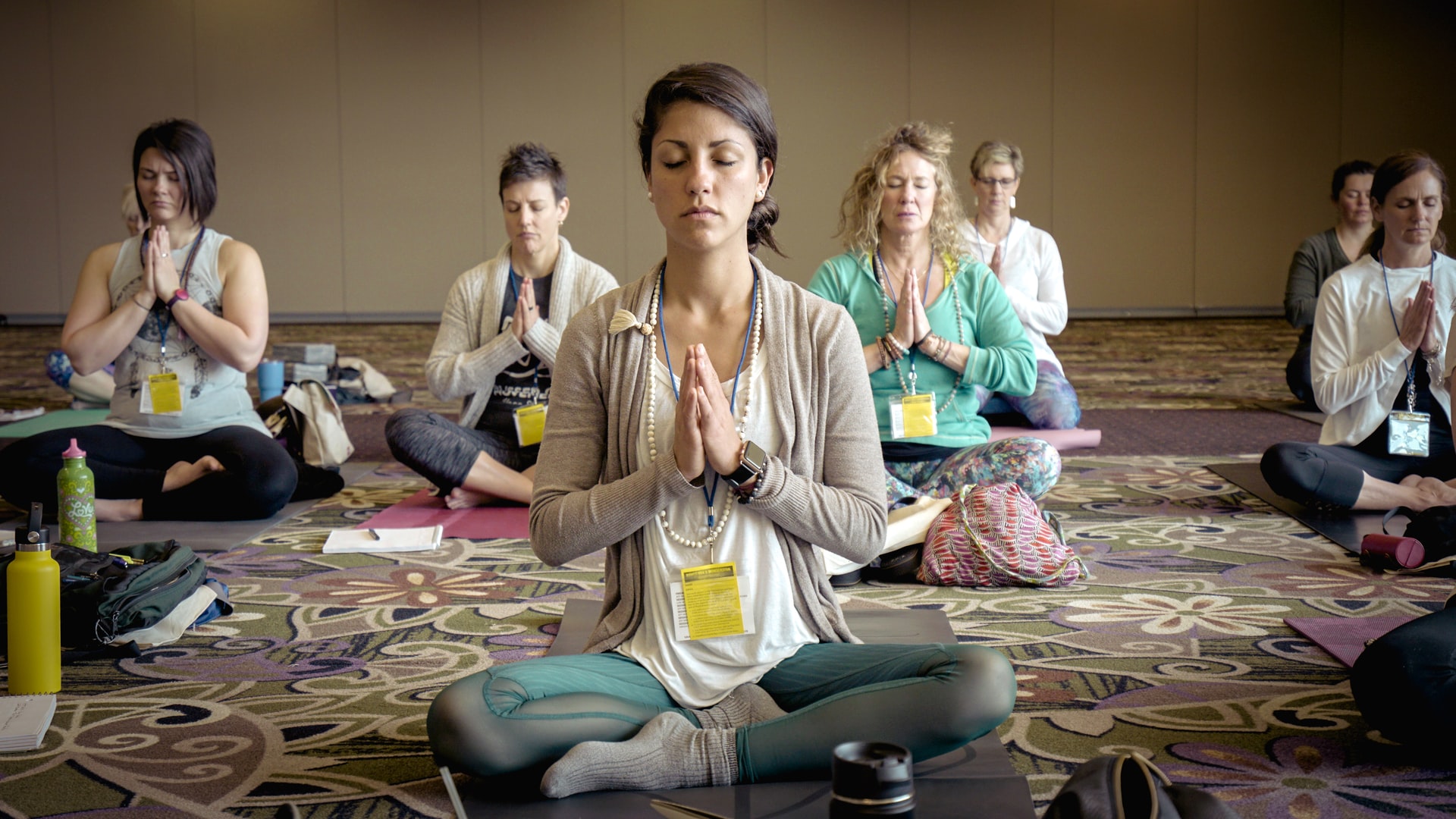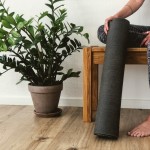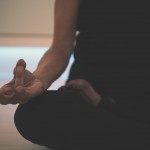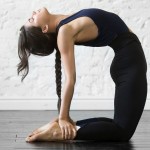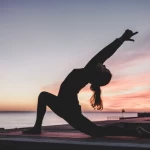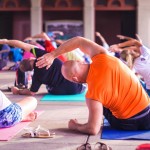Is every beginning difficult? Are you kidding me? Are you serious when you say that? Yoga is good for you from the first breath. Everything you need to know as a yoga beginner: basics, asanas, yoga styles & Co.
What is yoga
Yoga is a technique that was developed in India over two thousand years ago in order to live in harmony with oneself. Yoga describes both the state of clear mind and strong body and the path to this state. Yoga is a practical philosophy of life that lets you live more consciously and healthily and that goes as deep as you want it to be.
The word "yoga" comes from the ancient Indian language Sanskrit and literally means harnessing or yoke. The root “yui” can be found in the German word “yoke”. It is best to imagine a harness that binds body and mind together. The fact is that thousands of years ago people longed to bring opposites together. No different from what we do today.
Yoga is a lot and in the end what you make of it. What it is not: Asian gymnastics, circus acrobatics, what Indians or religion. And not yoga either.
How does yoga work?
Yoga strengthens coordination, flexibility, strength, and endurance, gets the metabolism going, prevents diseases of the cardiovascular system, and supports the musculoskeletal system. Just as many people have problems with their back, digestion, and sleep as a result of a modern lifestyle, and yoga has a direct effect on the metabolism, the nervous system, muscles, and joints, yoga also influences the modern mind and its overload in the hectic and hysteria of the 21st century Century. Mindfulness and the coordination of breath and movement practice self-awareness and create the first prerequisite for changing behavior patterns - if you want to.
In addition to health prevention and stress management, yoga has a fundamental effect on the psyche of the individual and society. Most of us have the feeling that we have lost contact with ourselves and our environment and perceive this condition as a deficit.
Yoga describes the feeling of putting down roots again and coming to terms with yourself and your surroundings, at least for the duration of the practice, which is not a bad start. The effect depends of course on the dose, the duration of the exercise, the discipline, and also the intention. In general, it is better to practice less, instead of practice regularly!
Yoga for the mind and body
Yoga has an integrative effect, that is, while we are practicing the mobility of our body, shaping muscles, losing excess weight, building strength and energy, our mind also experiences an impulse to recognize and get rid of negative thoughts and habits. Breathing exercises ( pranayama ) and meditation are also integral parts of a holistic yoga practice.
Those who only want to perform physical tricks will not enjoy the integrative power of yoga. This consists of experiencing yourself as part of a whole. This interplay of physical and mental effects is the essence of what we can experience in yoga: The body is the gateway to consciousness. Yoga has a unique effect on body, mind, and soul, integrating the physical, psychological and spiritual aspects of the human being like nothing else. Most of the exercise systems that are popular in the West focus on physical practice. But only through their spiritual embedding can yoga develop its full effect. Otherwise - there is nothing wrong with that - it remains just sport.
Spirituality means nothing else than establishing a connection to something that is bigger than you. To make this connection physically noticeable, to use the body as a base camp for trips into your own consciousness and to find peace there - this is the unique quality of yoga.
Finally: Yoga should be fun and do you good. The brisk slogan "no pain, no gain", which also reigned in yoga for a while, is out of date.
Can everyone do yoga?
“Anyone who can practice yoga who can breathe.” The legendary quote from the famous yoga teacher TKS Krichnamacharya describes why yoga is neither sport nor religion. No matter how old you are, how immobile, or how heavy: As long as you can breathe, yoga is available as a path to stillness, freedom in the mind, space in the joints, and general physical satisfaction.
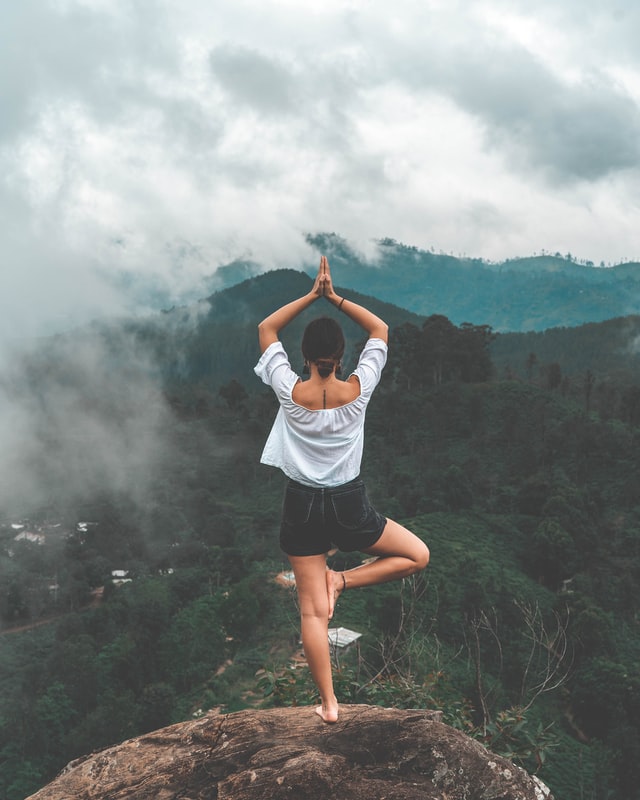
So, regardless of the yoga selfies that young yoginis share on Instagram, yoga is there for everyone. People who have health restrictions such as high blood pressure, herniated disc, sciatica, etc. should consult a doctor before the practice about what is possible or not.
Yoga is very adaptable: Yoga has a lot to offer even for people who are in wheelchairs, who suffer from Parkinson's disease, multiple sclerosis, or similar diseases. The following applies to pregnant women and also after childbirth: please only practice designated pregnancy and postnatal yoga.
Where can I practice yoga?
You can practice yoga anywhere you can breathe. Ideally, there is a flat surface, a springy wooden floor. Ideally, you have a mat ready, plus a few tools (see below) such as a blanket or block. It is best to be quiet and not too cold.
But you can also practice yoga without anything, in the pedestrian zone in Times Square, in economy class, in the office next to the coffee machine. As long as you concentrate and stay with yourself and your exercises, the outside world should not play a role.
Especially at the beginning, however, it helps to mark out a protected space for the practice that you like to enter and in which you feel comfortable, whether at home or in a yoga studio. In addition to discipline, yoga also teaches you humility: to get along with what is there. In practice, however, as I said, it doesn't matter where you roll out your mat, just that you do it.
In this episode of the YogaEasy podcast “Live better with yoga” you can find out from Annika Isterling how you manage to practice yoga at home on a regular basis!
What are the different styles of yoga?
For as long as there has been yoga, there have been a wide variety of methods and traditions in which yogis can practice. Whether powerful/challenging, sweaty / flowing, gentle and meditative, analytical/therapeutic, or ecstatic/wild - all styles exist peacefully side by side, and it is up to the individual to choose the one who suits best.
The main directions include:
- Ashtanga yoga
- Anusara yoga
- Iyengar yoga
- Jivamukti Yoga
- Spirit Yoga
- Kundalini Yoga
- Yin yoga
- Sivananda Yoga
The yoga taster course - your introduction to yoga
Would you like to start practicing yoga but don't know how and where to start? Our yoga taster course shows you everything that yoga offers you in seven days: simple exercise sequences that are perfectly tailored to beginners, an introduction to the most important breathing exercises (pranayama), and meditation for beginners. You don't know us yet? Then register for the program right away and try YogaEasy for 7 days for free!
Part of yoga is figuring out which method suits you best. No style of practice is better than the other, but the fact is that one style is better suited to the individual than the other and it is well worth it to find the right style.
Since yoga understands itself as the "science of man", the evidence is always the person himself, that is, the experience counts. In other words: trying things out is more important than studying. In order to find out which method works, you should not only practice this method once and in top form but several times and also when you are tired, exhausted or depressed.
In addition, the first association does not always lead to the goal. Anyone who has a lively temperament and tends to become breathless should not necessarily draw the conclusion that they only want to practice dynamically and sweaty, but rather choose a balancing, calm method. Conversely, those who tend to have phlegm or even depression are probably better off with an "anti-authoritarian" wilder style like Kundalini Yoga.
You might be interested reading The Best Hairstyle For Yoga , Dos And Don'ts in Yoga , & The Chakras at a Glance
How do I find the right yoga teacher?
Just like with the method, you can find the right one: n Teacher: in just by repeatedly trying things out. The right person is someone who helps one to stay on the yoga path. The one inspires without pushing himself into the foreground. One encourages one to practice without being too authoritarian. The one seduces you to autonomy and to take the responsibility yourself. Who opens your eyes to the beauty in yoga and in life.
It doesn't matter how famous or flexible the teacher is or whether your teacher calls himself a guru, has many followers and many yoga schools are named after him ... The relationship between teacher: in and student: it should be one that the Student: in helps to stand on one's own two feet (or on one ...).
Would you like to get more tips and tricks for yoga beginners? Then check out these articles:
- 6 tips for back-friendly yoga
- The most important yoga exercises for beginners
- The most important yoga styles at a glance
How is a yoga class structured?
Yoga is about movement. In order to get the cycle going, to release tension, to break blockages, both physically and mentally, we have to get moving. This is the only way we can change the status quo.
There are no generally binding rules for setting up a yoga class, but there are some principles that apply to most methods. The classic building blocks that make up a well-rounded yoga practice include:
- Meditation: Breathing meditation or simply sitting in silence
- Pranayama (breathing exercises): Exercises to get the flow of energy (Prana) going and to regulate it
- Asana (practicing postures): exercises that involve mobilizing the spine, strengthening the muscles and connective tissue, and stimulating the metabolism, i.e. bending forward, bending back, twisting, and reversing postures
- Mantra (Om): The beginning and the end of the practice are usually celebrated in silence or by chanting the mantra "Om"
- Savasana (deep relaxation): Up to ten minutes of deep rest at the end of the practice so that the body and mind can absorb the exertions
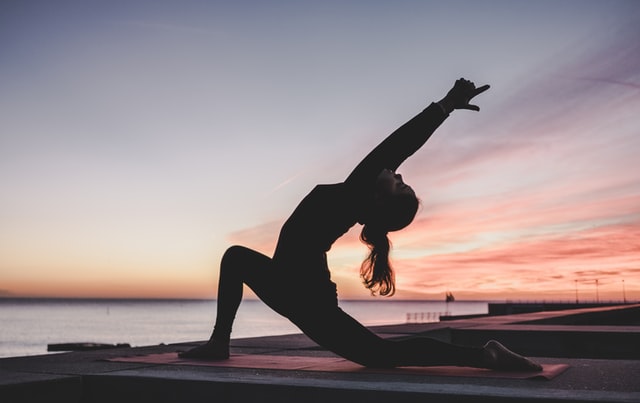
Which yoga accessories do I need?
The most important yoga accessory is of course your yoga mat. Especially in the downward-facing dog, you will be grateful if you have chosen a non-slip yoga mat. Yoga mats are usually a little thinner than normal fitness mats because standing positions, in particular, require balance, and a thick mat could quickly become a bit too shaky. However, thin yoga mats have the disadvantage that they - especially your knees - do not offer such good cushioning. Therefore, consider for yourself whether you would rather choose a thicker yoga mat for yourself. But you can also provide cushioning for thin mats, for example by folding the mat once or twice when standing on four feet.
Padding can also give you a folded blanket to put under your knees. In the final relaxation (Savasana) you can cover yourself warmly with it. An eye pillow also provides relaxation.
Your individual anatomy determines how flexible you are. Under no circumstances should you force yourself into a yoga pose if your body is not ready (risk of injury!). Yoga blocks and a yoga belt are useful tools that serve as extensions of your arms and legs and ensure that you can safely enjoy the exercises.
Tip: If you don't have any pads, you can also use thick books. If you don't have a yoga strap, a belt, scarf, or large towel will do the same.
If you find it uncomfortable or impossible to sit upright in the meditation seat, it helps if you sit elevated on the folded blanket, a yoga block, or a meditation cushion.
What do I have to wear to yoga?
Contrary to what you might think, baggy pants are counterproductive in yoga because they hide the body and get in the way of many asanas. On the other hand, comfortable leggings and tops made of organic materials, which guarantee freedom of movement and do not prevent the anatomical alignment of the body, are suitable. It is better not to have to look for your knees in the wall of the wall in order to bend them.
Can I lose weight with yoga?
Perhaps yoga is the best way to lose weight because it works most effectively. Since yoga is a philosophy of life, it's not about counting calories, but rather asking yourself: How do I want to live? And what do I need for that? Pizza or do you prefer a little yoga break?
Even if yoga is traditionally associated with asceticism and renunciation, yoga actually means living in balance with yourself. Obesity is therefore measured less in kilos than in the way of hastily and excessively satisfying one's own needs. Those who exercise regularly do not become a weight watchers, but an observer: in their own habits and thereby seduced by themselves to put aside the bad ones.
Yoga is not about looking good, it's about feeling good. There are many reasons to start practicing yoga, and none is better or worse than the other. Those who start yoga to lose weight will actually lose weight with regular practice, simply because those who are satisfied with themselves do not need food as a substitute for satisfaction. Many sweat-inducing methods also convert fat into muscles and convert the body, until then perhaps just a gas station and dusty pantry, into that sleek, famous yoga body in which one would like to live.
The associated attractiveness is not only due to the new muscles, but above all to the gained self-confidence and a new serenity.
Is Yoga a Religion?
Yoga is not a religion, but a practical philosophy of life. Without formulating beliefs, yoga provides the framework for personal growth. To stay with the image of the horse harness, in which body and mind are harnessed under a yoke (= yoga): Yoga has the onboard resources and the technology to change. Everyone decides where the journey goes: you yourself.
Which yoga class is suitable for beginners?
" Start with Yoga: Your 21-Day Program " is a yoga course especially for people who want to start with yoga and have no experience. So the yoga class is perfect for you if you feel like trying yoga at home. In this online yoga course, Anna Trökes, one of the best-known and best yoga teachers in Germany, takes you on a journey into the world of yoga and to yourself!
For 21 days you will receive a daily exercise video and a PDF to download with the most important information about the practical part. You will also receive either an article with tips for practicing at home or a podcast episode with exciting information about the background of yoga.
In these 21 days you will learn:
... what yoga is, how it works and how it supports you in everyday life
... simple yoga exercises (asanas) for yoga beginners: inside
... meditation, conscious movement, deep breathing, and mental calm
... and you get a lot of tips to get you started
Yoga exercises for beginners: inside
The standing bent forward (Uttanasana) and the half-bent forward (Ardha Uttanasana) you will encounter in every yoga class. In this tutorial, yoga teacher Annika Isterling shows you what to look out for.
The sun salutation for beginners - In this video, you practice the simple sun salutation from Hatha Yoga with Anna Trökes as well as other simple yoga exercises and techniques.
The strengthening yoga sequence for beginners: inside - Christina Lobe guides you through 30-minute yoga practice in this yoga video. You will learn the most important elements of the sun salutation and build strength and flexibility with simple asanas. The following yoga exercises are suitable for beginners: indoor and are included in this yoga unit:
- Cat-cow
- Diagonal stretching when standing on four feet
- plank
- Downward facing dog - Adho Muka Shvanasana
- Standing Forward Bend - Uttanasana
- Flank stretching while standing
- Mountain Pose - Tadasana
- Chair - Utkatasana
- Deep lunge - Anjaneyasana
- High lunge - alanasana
- twisted lunge - Parivrtta Anjaneyasana
- Cobra - Bhujangasana
- Warrior II - Virabhadrasana II
- Stick pose - Dandasana
- Sitting forward bend - Paschimottanasana
- Crocodile variant - Makrasana
- Shavasana
Read more at TamarSamirYoga.
